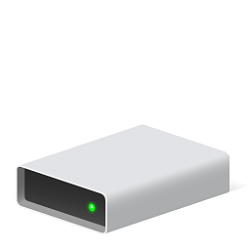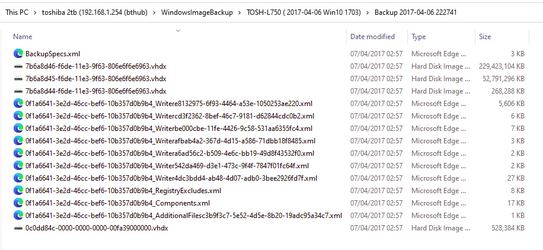- Local time
- 1:27 AM
- Posts
- 5,686
- OS
- Windows 10 Pro + others in VHDs
Pretty sure it will still not include it - selection of partitions to backup is not related to how the partitins are backed up.This thread mentioned that the MSR partition is skipped in a full disk backup with AOMEI, I wonder if that is a result of this "intelligent sector" in Backup Mode and if "Make an exact backup" would include MSR. Anyone tried this? would the free space also be backed up when selecting "Make an exact backup"?
Anyway, with exact backup you end up with much larger backup files (not due to tiny MSR partition but fact ever sector is backed up in a selected partition (even if not used any more). If somebody go hold of your backup, they could get access to deleted (confidential) files. I tried doing an exact backup of my OS drive with 700 GB spare on secondary drive, but ran out of space but using intelligent sector backup, I only use around 100 GB. The size difference is enormous in my case.
I cannot think of a single case where a normal would not use intelligent sector backup . Maybe the police or MI5 spy (say) would use it for forensic examination purposes.
It is slightly odd that AOMEI exclude the MSR file from a full backup given it is officially part of MS official UEFI layout (indeed even more oddly MS ignore it if I remember correctly in some circumstances).
The main point is that the MSR partition has never been used, and it looks like it will never be used.
"The UEFI specification does not allow hidden sectors on GPT-formatted disks. Microsoft reserves a chunk of disk space using this MSR partition type, to provide an alternative data storage space for such software components which previously may have used hidden sectors on MBR formatted disks. Such software components can create a small software-component specific partition from a portion of the space reserved in the MSR partition."
Some games typically used to use these MBR hidden sectors to provide security info e.g. copy prevention. What actually happened is the games manufacturers changed how they did things (presumably easier than developing separate UEFI/Legacy bios versions). As a consequence, it seems nobody has ever used this partition, and as UEFI has been around 10 years or so, I doubt anybody ever will. Indeed the original W8 MSR partition was 128 MB, and now is only 16 MB in W10.
So not backing it up has absolutely no impact at all. If MS or somebody ever does need the MSR partition, you can easily create one from diskpart.
My Computer
System One
-
- OS
- Windows 10 Pro + others in VHDs
- Computer type
- Laptop
- Manufacturer/Model
- ASUS Vivobook 14
- CPU
- I7
- Motherboard
- Yep, Laptop has one.
- Memory
- 16 GB
- Graphics Card(s)
- Integrated Intel Iris XE
- Sound Card
- Realtek built in
- Monitor(s) Displays
- N/A
- Screen Resolution
- 1920x1080
- Hard Drives
- 1 TB Optane NVME SSD, 1 TB NVME SSD
- PSU
- Yep, got one
- Case
- Yep, got one
- Cooling
- Stella Artois
- Keyboard
- Built in
- Mouse
- Bluetooth , wired
- Internet Speed
- 72 Mb/s :-(
- Browser
- Edge mostly
- Antivirus
- Defender
- Other Info
- TPM 2.0





















